Dear Family,
“Stay positive. Test negative.“
That’s what the charming, unmasked older woman I didn’t recognize said to me from the now completely worn-away grass next to the Sligo Creek Trail as we ran past one another earlier this month.
While the stranger’s second suggestion is not entirely within my control, I’ve decided that her first one is, and I’ve been trying to identify silver linings as we feel our way through month four of whatever this is.
In doing this I run the risk of giving the impression that I’m actually pleased it’s happening. I of course am not. As much as I’ve appreciated elements of the resulting introvert’s paradise, I nevertheless mourn with those who mourn. I grieve not only with those who have lost health or loved ones but with those who have lost the comfort of economic stability, routine, and general peace of mind. I’m also sorry that Mom and Dad had to cancel their trip to Greece and that we don’t let them within six feet of their grandchildren anymore.
I sometimes get the impression that Grandma and Grandpa feel we’re taking all this too seriously. But I also think they understand that we’re just trying not to kill them. With the gradual relaxing of things, we spent a couple of pleasant evenings with them and Peter this month—one in their backyard and one in ours. The tender mercy of several uncommonly un-hot and un-humid June days made this especially pleasant.
And so rather than dwelling on the inherent difficulty of effectively communicating through a mask and plexiglass shield with the order-taker at our favorite faux-Thai place in the mall food court whose first (and possibly second) language is not English, I am choosing to just be grateful that the place actually opened again on Friday for the first time in over 100 days. I haven’t the faintest idea where they could be storing all the tables and chairs that used to fill the now-empty food court, but it was good to be back.

Another upside of current conditions is that I was able to get a same-day appointment with my orthopedist a couple of weeks ago. I was becoming increasingly frustrated by pain in my right calf when I ran (and only when I ran) that I thought was getting better and then got worse. Because it only hurts while running, my 85 IQ was able to ascertain that the solution was probably to stop running for a while. But I was struggling to make myself do that and was hoping the doctor would have some sort of magical fix — even though I knew he wouldn’t. (When it comes to faith, hope and charity, I bat a fairly consistent one for three.)
And so I took a 10-minute bike ride down to the Greater Washington Orthopaedic Group’s office in the building adjoining Holy Cross Hospital. For presumably the same reason that I was able to get a same-day appointment, the doctor was able to spend nearly a half-hour speaking with me, which is about 25 minutes more than I usually get from any doctor. He looked at my x-rays (which revealed nothing) and then sat down on the opposite side of the room from me. We both wore masks, of course, but it was quiet and we were two native English speakers who grew up in the same metropolitan area, and so communication was not difficult. He asked me some questions from way over there, then scooted his chair over to me, pushed on my calf in several places, and then rolled back to the other side of the room to continue the conversation.
His diagnosis was a soleus strain. Like most of my muscles, I didn’t even know I had a soleus until it started giving me trouble. I now understand the soleus to be a small calf muscle underneath the much more prominent calf muscle that I had always thought of as my only calf muscle.
After questioning me about my running habits, the doctor concluded that my soleus injury was most likely the result of “training error.” I have a pretty good idea of what the error was, and, like most of my problems, it stems from my being an idiot.
The doctor, himself a 52-year-old runner, advised me that there are likely a growing number of poor choices that I could get away with as a 38-year-old runner that I no longer can at 48. More depressing, though I didn’t mention it, is the body of things I apparently could get away with at 47 that I can’t at 48. He suggested that I not run for two weeks and that I not be an idiot (not his exact words) when I started again.
I managed to abstain for 11 days, which I rounded to two weeks, before heading out yesterday. The leg felt great for about 800 meters before I realized I’d made a mistake and walked home.
Not being an idiot, unfortunately, remains elusive for me. I’ll try again next Friday.
And so in the end, my visit to the orthopedist was like any number of church meetings. It was largely unnecessary; it lasted longer than it needed to; I was told things that were affirming of what I already believed; I followed the ensuing counsel in my own imperfect and haphazard way; and I was ultimately glad I went. “They that are whole have no need of the physician,” Jesus said, “but they that are sick.” Sometimes a pointless meeting is just what the doctor ordered.
The upside of my running injury is that it roughly coincides with the re-opening of swimming pools.
The Silver Spring YMCA’s 3-month closure officially ended at 8 a.m. on Saturday, June 20th. At 7:40 a.m. I pedaled my bike through the empty YMCA parking lot, where every second spot had been coned off—they don’t even want the cars breathing on each other from less than 6 feet away. I racked my bike and was first in line to get in. I got hit with the forehead thermometer at 7:55 (by a guy who said my temperature was 95-point-something, which didn’t seem right, but I wasn’t going to suggest he take it again); I scanned my membership card at 7:56; and at 7:58, having skipped the supposedly-mandatory-but-never-enforced pre-swim shower and removed my mask literally at the water’s edge, I was first into the pool.
[I just wrote and deleted three paragraphs detailing how poorly the workout went. No need to thank me.]
Safety measures at both the YMCA and our neighborhood pool, which opened two days later, are almost certainly overkill. I can’t imagine it’s really necessary to clear the pool and sanitize ladders, chairs and other surfaces every 45 minutes (at the YMCA) or every 90 minutes (at the neighborhood pool) but I get it. At some point, once someone can effectively demonstrate that no one is getting infected by whatever trace amounts of virus can manage to survive on a swimming pool ladder, we might be able to dial back some of this theater. But until then I understand wanting to give the appearance of erring on the side of caution.

I must not make much use of my soleus while cycling because that doesn’t seem to bother it at all. The gradual return of cars to the roads means that my three-month respite from being honked and sworn at by motorists is now over. One of the guys who honked at me this week was justified in doing so. (I’d cut him off.) But the guy who swore at me wasn’t. (A much longer story stemming from a difference of opinion over whether a cyclist should be expected to stop and yield to a large flock of geese stretched in a line across all six lanes of University Blvd. My view was so long as I could get through without actually striking any of the birds that I was fine. The driver, who was inclined to exhibit more patience with a flock of geese than with his fellowman, disagreed. He called me a vulgar term for a body part—rhymes with “glass bowl”—and that was the end of it. I continued on my way and he sat in his car looking at geese.)
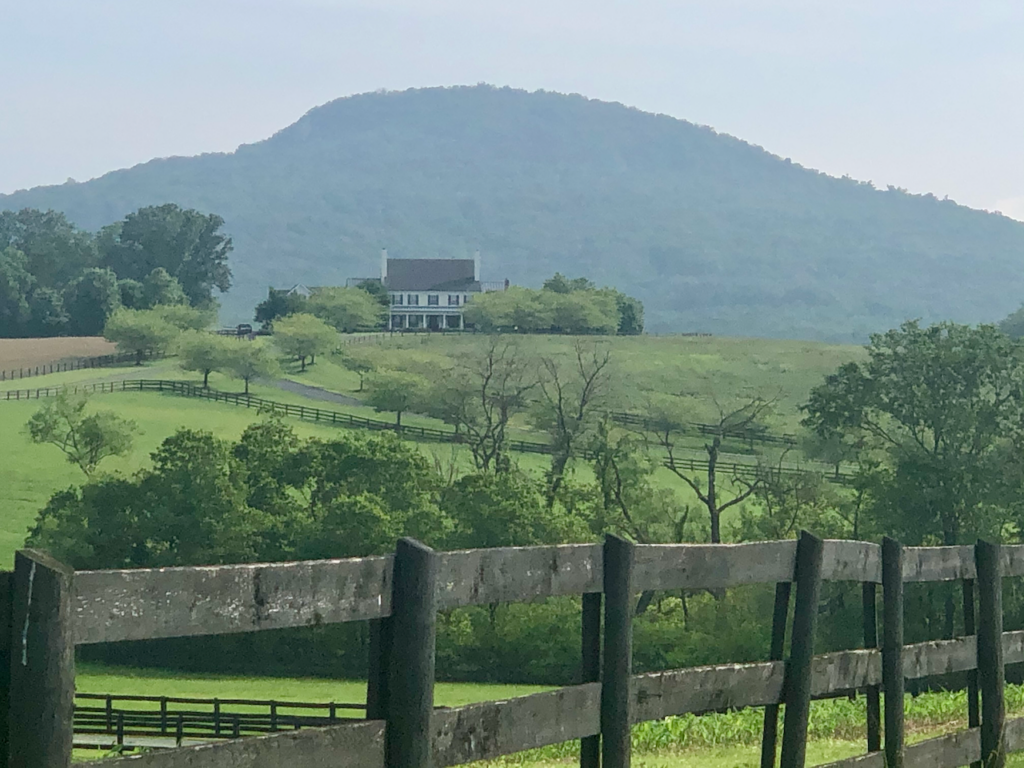
My second-favorite bike ride of the month was a 94-mile round trip from home to the top of Sugarloaf Mountain, which I did by myself (to the consternation of many drivers who were stuck behind me on the climb up a steep, narrow road). My favorite ride of the month, one week later, was a somewhat easier (flatter) 81-mile round-trip from home to Annapolis with Grant, Andrew, and Alex Willis. We left at dawn, grabbed breakfast at Chick & Ruth’s Delly (in Annapolis), and were home in time for lunch. I think it was the first time we’d been together since the shutdown. The accompanying pictures lend the impression that we did not distance from one another to the extent we ought to have. The pictures are not misleading.

Andrew, Alex, Me, and Grant — Annapolis, Md., 13 June 2020 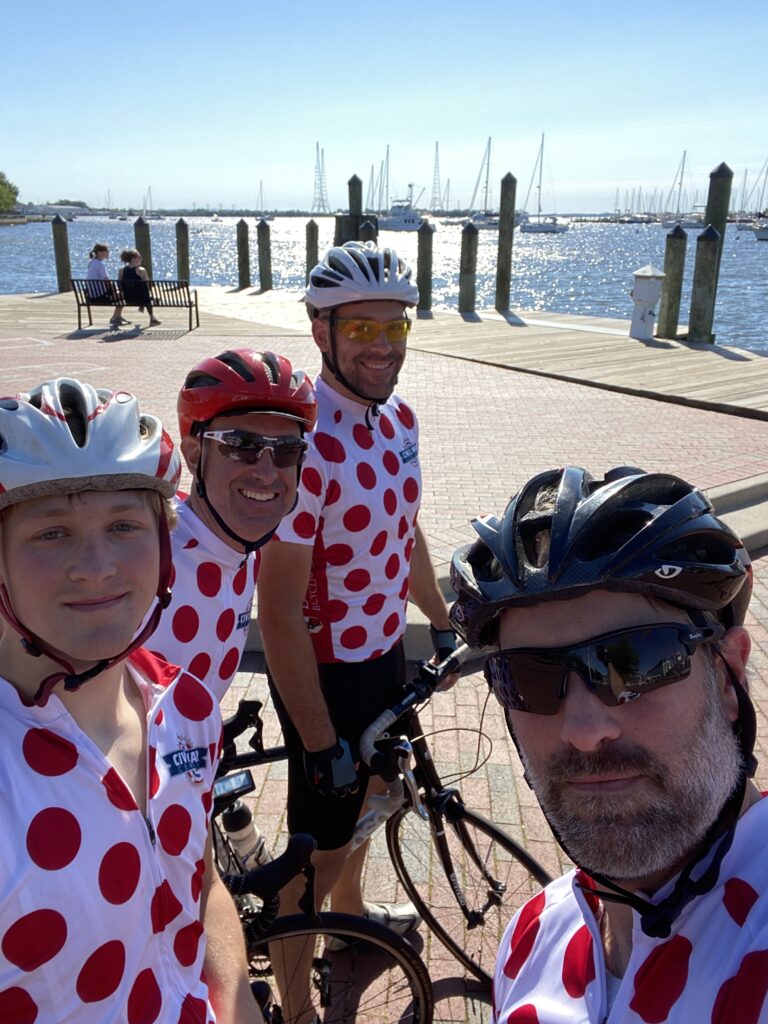
Alex, Me, Andrew, and Grant — Annapolis, Md., 13 June 2020
Speaking of not distancing, I also took a couple of rides through the two blocks of 16th Street, across Lafayette Park from the White House, that have been rechristened “Black Lives Matter Plaza” by the mayor and have launched a flurry of copycat street murals around the country. Both of my visits were in the morning, when a lot fewer people were around and the area had the feeling of a large block party, as opposed to later in the day when things tended to get a little more intense. By all reputable accounts, the protests have been overwhelmingly peaceful, but I didn’t feel any particular urgency to throw myself into a crowd during a deadly global pandemic. Crystal, Lucy, Sophie, and Grace attended smaller-scale protests in and near our neighborhood, and the whole thing continues to be eye- and mind-opening for me.
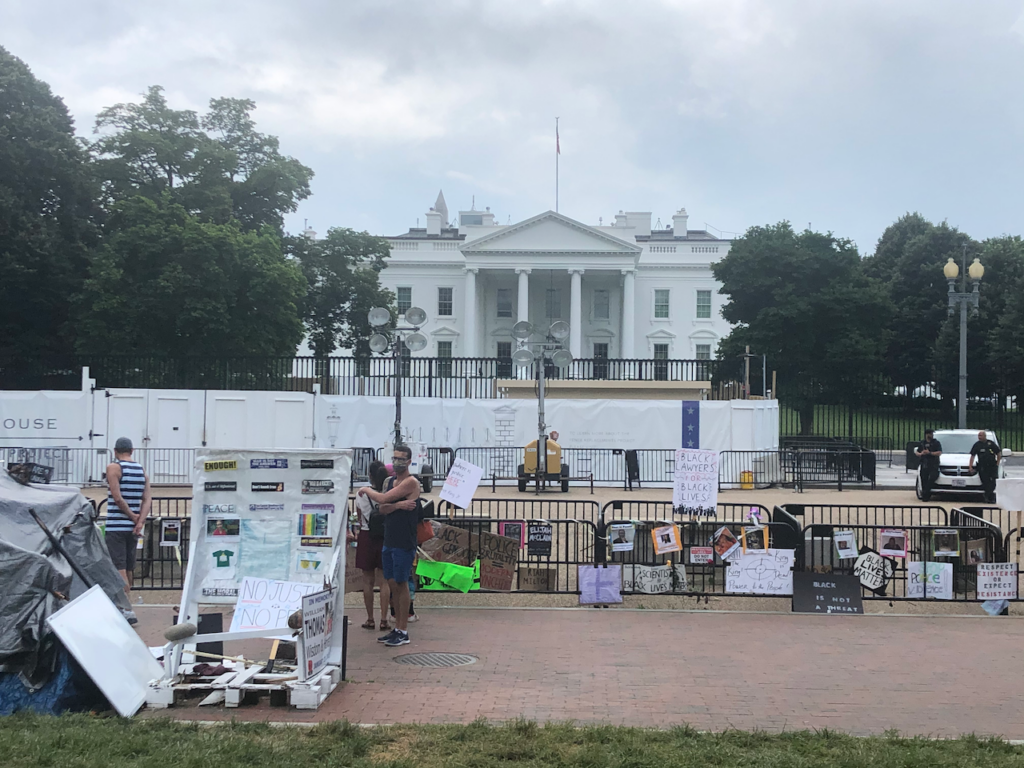
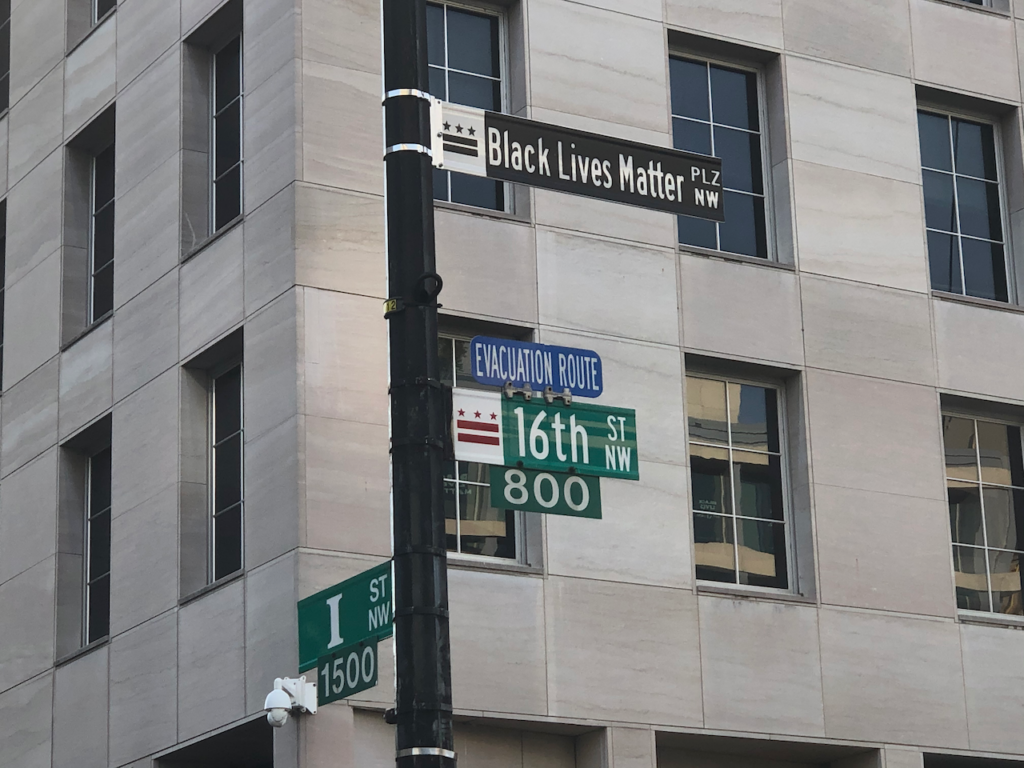
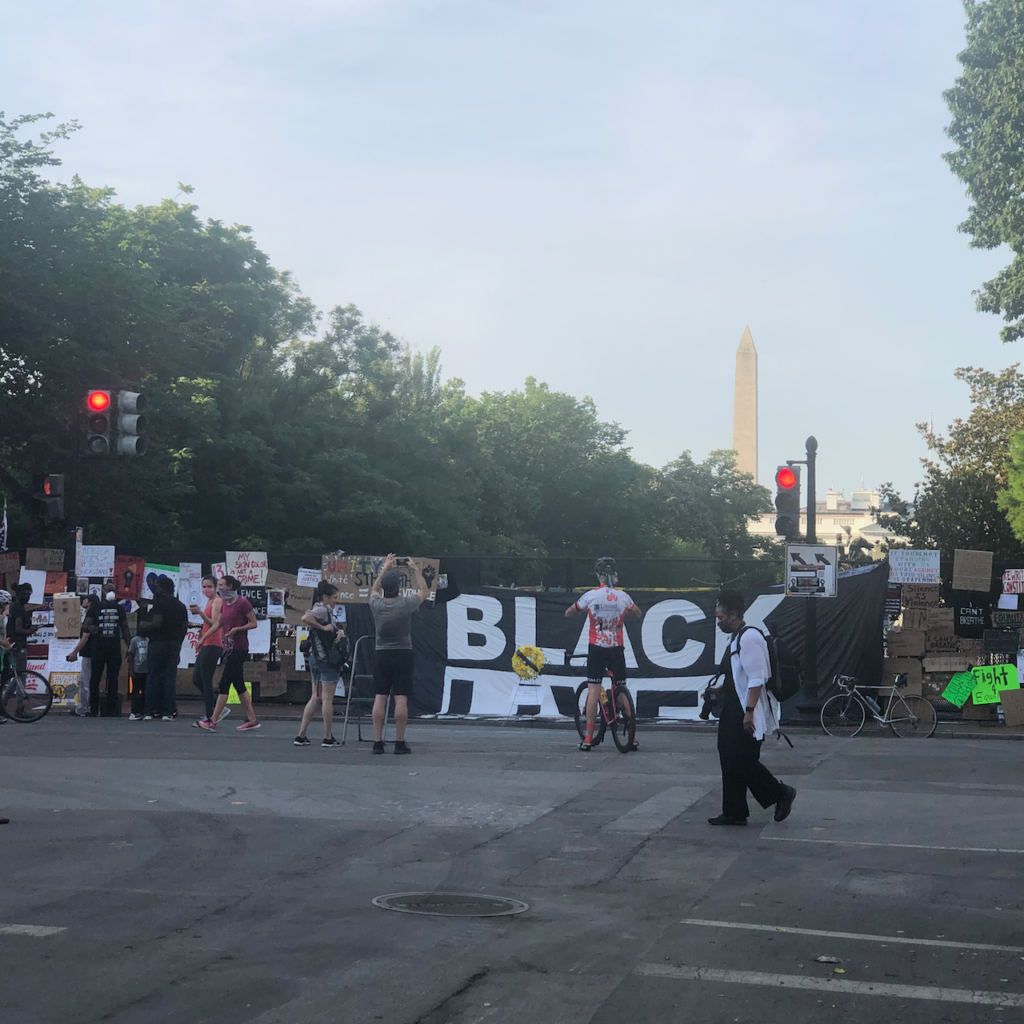


The last of Sophie’s several virtual graduations took place this month. I’ll repeat what I wrote last month: They should all be this way.

Sophia — 3 June 2020
Sophie also received word this week of BYU’s plans for on-campus instruction in the fall. It’s increasingly looking like she’ll be there. Check-in to Heritage Halls has been spread across three days in order to create some modicum of distancing. The university has announced that classes after Thanksgiving will be taught virtually, which means we’ll have Sophie here for Thanksgiving and the whole Christmas season, which is yet another positive outcome of the pandemic—at least for me. I’m not sure how Sophie feels about it.
Speaking of daughters in Utah, after learning that a patient with whom she’d been in close regular contact had subsequently tested positive for the virus, Hannah, who suddenly wasn’t feeling well herself, underwent an emergency test last weekend—which came back negative. This is doubly fortunate since testing positive would have likely made it impossible for her to sit for the NCLEX (the RN licensing exam) this past Thursday in Colorado. (I can’t remember where in Colorado, but it’s not a very big state, is it?) Hannah said the test is usually several hundred questions but—in yet another hidden benefit of the pandemic—it had been reduced to somewhere between 60 and 100 questions. She thinks she did okay but was understandably apprehensive about the large number of questions with “check all that apply” answers. I hate those questions.
One final positive: But for the pandemic I almost certainly would not have been able to witness my Uncle David Farnsworth’s funeral this month (via livestream). The service was just perfect—a wonderful tribute to an extraordinary man—and, if you don’t mind my saying, the perfect length. (Funerals are among my very favorite church meetings, but once they run beyond about 75 minutes, I start wishing I could trade places with the person in the casket.) This one was just right. I think it was Reed’s talk that listed all the common expressions that drove his dad nuts. I can’t remember what all of them were, but as Reed was reciting them, I remember thinking that they were all things that I say all the time and could actually recall saying in Dave’s presence. But I don’t recall his ever giving me a hard time about it. It pains me to think that my language aggrieved him so, but it’s a tribute to his kindness that he never made me feel bad about it. He never made me feel anything but loved and appreciated. He was the perfect kind of uncle—fun enough to have a great time with, stern enough to keep me out of trouble. A fine example all the way around. I miss him.
If you’re wondering, it’s completely in character for me to use a verbose, 2,100-word letter to complain about meetings that run too long. Sorry about that. I genuinely hope this one finds you well and happy.
Love,
Tim


1 thought on “VOL. 23, NO. 6”
Comments are closed.